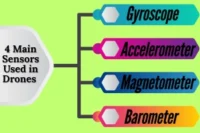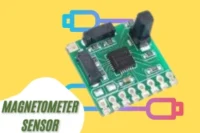Ready to Fly Without GPS? Master It Step by Step
Published: 18 Jul 2025
What if your drone loses GPS mid-flight—would you know what to do? Or what if you’re flying in an area with weak satellite signals? Knowing how to fly a drone without GPS can save both your drone and your day. You don’t need fancy features—just solid flying skills and manual control. It’s like driving a car without a GPS—you rely on instinct, experience, and road signs to get home safely.
Why Learn to Fly Without GPS
There are many situations where GPS simply won’t work. You might be flying indoors, near tall buildings, under heavy tree cover, or in areas with weak satellite signals. In these cases, your drone can’t lock onto GPS, which means it won’t hover in place or auto-return if something goes wrong. That’s why knowing to fly without GPS is so important. It builds real piloting skills and gives you full control. You become more aware of how your drone behaves and how to react quickly. Imagine your drone suddenly loses GPS mid-flight, it starts to drift, and you can’t rely on the usual safety features. If you’re not prepared, you could crash. But if you have practiced flying without GPS, you’ll know exactly what to do. That confidence can save your drone and give you more freedom to fly in different places.
Understand Your Drone’s Manual Mode
If your drone loses GPS or you’re flying in an area with no signal, it will likely switch to a manual or attitude (ATTI) mode. This mode gives you full control—but also more responsibility. Here’s what you need to know:
Manual or ATTI Mode : Manual mode, often called ATTI mode, is when the drone operates without any help from GPS. It won’t lock its position or hold altitude on its own. Instead, it will respond only to your stick movements and rely on internal sensors for balance.
Key Differences from GPS Mode : In GPS mode, the drone stays still when you release the sticks. It auto-hovers, maintains altitude, and can return home automatically. In manual mode, the drone keeps drifting if you don’t control it. There’s no GPS positioning, no safe return, and no automatic corrections.
Why This Mode Builds Real Skill : Flying in manual mode forces you to stay alert. You learn how the drone reacts to every stick input. You must manage direction, altitude, and speed all on your own. These skills make you a sharper, more confident pilot.
When You will Use This Mode : You might enter ATTI mode without choosing to like during a signal drop. But you can also switch to it for practice. It’s especially useful for indoor flying, racing drones, or areas where GPS is unreliable.
Pre-Flight Setup Without GPS
When you are flying without GPS, the drone won’t have satellite help to keep it steady. That means your setup matters more than ever.
Check Your Gear : Make sure your drone batteries are fully charged. Inspect the propellers for any cracks or damage. Also, ensure your controller is paired and working properly. A weak battery or loose connection can quickly ruin a manual flight.
Calibrate Sensors Manually : Without GPS, your drone depends on its internal sensors like the compass and IMU (Inertial Measurement Unit). Calibrate both before flying to avoid unwanted drifting or sudden tilts. Always follow the steps provided in your drone’s manual for accurate calibration.
Pick the Right Flying Spot : Choose a large, open area with flat ground and few obstacles. Avoid crowded places, trees, and power lines. Calm weather is best because strong wind will push your drone off course, and there won’t be GPS to stabilize it.
Check for Interference : Avoid areas with strong magnetic interference, like near large metal structures or cell towers. These can confuse your drone’s sensors and affect how it behaves during flight.
Basic Manual Flying Skills You Need
Flying without GPS means your drone won’t stay still on its own—you have to do the work. One of the first things to practice is hovering. Without GPS hold, your drone will drift naturally, so you’ll need to make constant, gentle stick adjustments to keep it steady. Throttle control is another key skill. You have to manually maintain altitude by adjusting the throttle carefully. If you push too hard or too little, your drone will quickly rise or fall. Stick sensitivity also matters. The smoother and smaller your stick movements, the better control you’ll have. Jerky movements can throw the drone off balance. Finally, you’ll need to learn how to turn and correct drift. Since the drone won’t lock its position, it will slowly move with the wind or momentum. You’ll need to recognize the drift and guide it back gently. With regular practice, these basic skills will become second nature.
Use Visual Cues for Positioning
When you are flying without GPS, your screen won’t show a live map or real-time positioning. That’s why it’s important to use what you see around you to stay in control. Visual cues help you know where your drone is and where it’s heading.
Use Landmarks : Look for trees, buildings, poles, or even road markings to track your drone’s movement. These help you stay oriented and give you reference points to guide the drone back if needed.
Keep It in Sight : Always fly where you can see the drone clearly with your eyes. Don’t rely only on the controller screen. Seeing your drone in real time helps you react faster and avoid obstacles.
Track Movement Manually : Watch how your drone moves compared to the ground. If it’s drifting left or right, you’ll notice the change by checking its position against fixed objects.
Avoid Visual Confusion : Don’t fly in places where everything looks the same—like empty fields or deserts. It becomes harder to judge distance and direction without landmarks.
Safety Tips When Flying Without GPS
Flying without GPS means your drone won’t auto-return, auto-hover, or stay stable on its own. That’s why safety should be your top priority. Here are a few simple tips to follow every time you fly manually:
- Set a Manual Return Plan
Before takeoff, choose a clear, open spot where you’ll land the drone if anything goes wrong. Without GPS, you can’t rely on auto-return, so knowing your landing zone ahead of time gives you a backup plan. - Watch the Wind
Wind becomes a bigger problem when GPS isn’t holding your drone steady. Even light wind can cause it to drift. Fly in calm weather whenever possible, and if there’s wind, keep the drone low and within close range. - Avoid Crowded or Tight Areas
Always fly in wide, open spaces. Avoid trees, buildings, power lines, or people. Open areas give you more space to correct mistakes and reduce the chances of a crash. - Keep the Drone Close
When flying manually, don’t send the drone too far away. It’s harder to see, control, and bring back. Staying close helps you keep visual contact and stay in full control.
What to Do If You Lose Control
Losing control of your drone without GPS can feel scary, especially for beginners. But with the right steps, you can stay calm and bring your drone back safely.
Stay Calm : The first step is to stay calm and avoid sudden stick movements. Quick or jerky actions can make the situation worse. Take a breath and slowly reduce your inputs to regain control.
Lower the Throttle : If your drone starts to drift or behave unpredictably, gently lower the throttle. Bringing the drone closer to the ground reduces the risk of damage and gives you more time to react.
Perform an Emergency Landing : Look for a clear, open space and slowly guide your drone down. Avoid trees, roads, or crowded areas. Even a rough but safe landing is better than a crash or flyaway.
Track the Drone Visually : Focus on where your drone is in the sky. Use landmarks or fixed points on the ground to figure out its direction. This helps you reorient and guide it back to a safe position.
Wrap-Up
Flying a drone without GPS can feel tough at first, but it’s one of the best ways to grow as a pilot. It teaches you how to stay calm, make smart decisions, and understand how your drone truly behaves. By following the steps in this guide, setting up properly, practicing manual control, using visual cues, and staying safe, you will build real flying skills that go beyond automatic features. Don’t rush the process. Take your time, fly in open areas, and keep practicing. With each flight, you’ll get more comfortable, and soon you’ll be able to handle almost any flying condition, with or without GPS.





